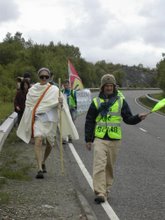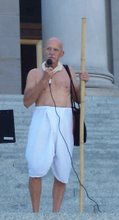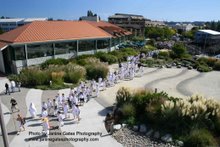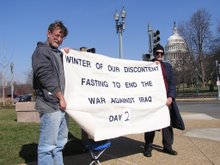Today, January 5th, we begin our next to last day in Ho Chi Minh City and on our tour. I have not shared the War Museum experiences in Hanoi, Hue, and here in HCMC. The museums go back to the historic 1000 year period of Chinese control of Vietnam, from the beginning of AD to 1000 AD, and they touch uppon the various exploits in the second millemium. But, the major emphasis is the Indochinese war with the French, the post WW II peiod when the French were supported by the United States until they were defeated in 1954; then, the United States exploits culminating in the Vietnam War ending in 1975. The museums show the histories from a Vietnamee point of view as is expected.
For me, the visits are a review, almost a reliving of the history, especially from 1965 to 1975 when I was becoming involved in social activism, moving from supportive to US policy to radical desent and resistance. As the museum show quotes of US Senators that US policy of Vietnam violate the Geneva 1954 Peace Accords, the UN Constitution, and US Constitution, I also feel like "this is just like the Iraq war." Not really a surprise.
The museums begin outdoors with huge displays of captured US weaponry, aircraft, and tanks, and go to documemtaries, photo exhibits, models, etc of all types. There are even prisons and tiger cages. And, some were from the Diem regime in South Vietnam. Of course, the role of Ho Chi Minh and the North Vietnam military are given central focus for saving and liberating Vietnam. (We will return to the HCMC museum today to see the Agent Orange documentary.)
The self immolation of the Buddhist Monk protesting the oppression of the Buddhists by the Diem regime is shown with photographs which I remember from 1967. The execution of the Viet Cong prisoner by a South Vietnm officer in Saigon, and the girl stripped by napalm are captured by historic photos, among numerous other experiences are also shown. However, there is no mention of the witness of Thich Nhat Hanh, the Buddhist monk who spoke against both sides in this conflict, advocating peaceful resolution, and being sent into exile in 1966, only to return to Vietnam for the first time in 2005.
Yesterday, we visited the Co Cui tunnels outside of HCMC where the villagers lived from 1954, resisting first the French, then the Americans, until 1975. We crawed through a tunnel and saw a way of life that harrassed the militaries in amazing, and grusome fashion. Now a tourist site, the transformation exploits the war situation for economic and "educational" purposes. Our tour guide is from this area and is a sincere Buddhist. We enjoyed our visit to his home and fine lunch served by his family.








1 comment:
Wishing you well. Sounds like and extraordinary trip.
Post a Comment